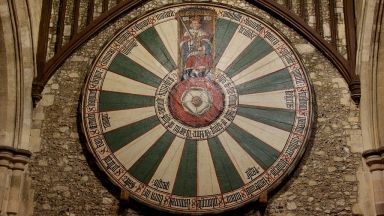Manifold Way
Walk in Buxton

The Manifold Way, also known as the Manifold Track, should not be confused with the longer Manifold Trail, which is a 23-mile walking route stretching from Dovedale to the village of Flash. While the Manifold Way and the Manifold Trail share some sections of the route, the Manifold Trail is not legally accessible for cyclists and features rocky and uneven terrain in certain areas.
Originally, the Manifold Way was the path of the Leek and Manifold Valley Light Railway, a narrow-gauge railway that operated independently from 1904 to 1934. This unique railway was recognized for its distinct yellow locomotives, inspired by those used in India. While primarily serving as a transportation route for milk trains and tourism, the railway ceased operations in 1934. Merely three years later, in 1937, Staffordshire County Council opened the Manifold Way along the former railway track.
Unlike the railway, the Manifold Way does not pass through notable villages. In fact, one railway worker once described it as a route that begins and ends in the middle of nowhere. Although the railway served several villages and hamlets along its path, these settlements are mostly situated approximately a mile above the valley floor. This geographical aspect likely contributed to the railway’s closure. However, it also means that today, the Manifold Way offers a serene and secluded route for visitors to enjoy.
What to see on the Manifold Way
Upon reaching Hulme End, take the opportunity to explore the restored former station building, now a captivating Visitor Centre. This site is definitely worth a visit and is open on most weekends and during school holidays. Inside, you’ll find informative displays about the railway, a collection of memorabilia from the line, and a selection of souvenirs, guide books, and maps. Additionally, there is a quaint little cafe located in the former Engine Shed, as well as public toilets for convenience.
Shortly after departing from Hulme End, keep an eye out for the site where the Ecton Creamery once stood. This creamery played a pivotal role in transporting freight along the railway. During the early 20th century, it enjoyed tremendous success, producing over 3 million litters of milk annually. A significant portion of the milk from Ecton was destined for London, and as a result, direct milk trains were established between London and Waterhouses in the early 1920s.
Not far from the creamery, you’ll catch sight of the remnants of Ecton Mine perched high on the hillside. Ecton Hill, owned by the Dukes of Devonshire, has been a site for copper and lead mining since the 16th century. Initially, the mining rights were leased out, but in 1760, the fourth duke decided to operate Ecton Mine himself for his own profit. By the early 1800s, the mine employed 400 workers and was recognized as England’s most prosperous individual copper mine, yielding over 60,000 tons of ore. When the mine ceased operations in 1891, the Duke’s profits, totaling nearly a third of a million pounds, funded the construction of the Crescent in Buxton.
Wetton Mill, formerly a functioning water mill for grinding corn, ceased its operations in 1857. However, visitors can still observe the remnants of the mill stream and a grinding stone. Nowadays, it serves as an ideal resting spot halfway along the Manifold Way. At Wetton Mill, there is a charming café offering refreshments and restroom facilities. It presents an excellent opportunity to enjoy a picnic and a leisurely stroll by the picturesque riverside, providing delightful views and the chance to dip your toes in the water.
Just south of Wetton Mill, keep an eye out for the impressive entrance of Thor’s Cave. This natural cavern is nestled in a steep limestone crag, and its massive arched opening can be easily spotted from the Manifold Way. You can follow public footpaths that lead up to the cave’s mouth and venture inside, but exercise caution due to the steep, elevated, and unprotected drops within. Thor’s Cave bears evidence of human habitation during the Stone Age, extending into the Iron Age and Roman period. Excavations conducted in the past have unearthed stone tools, pottery, amber beads, bronze items, and even burial sites of at least seven individuals.
Continuing along the route, you’ll encounter Beeston Tor, a striking limestone rock formation renowned for its breathtaking scenery and popular among climbers. Excavations in the caves of Beeston Tor have also revealed remnants from the Neolithic and Bronze Age periods.
Lastly, as the Manifold Way progresses, it meanders through the picturesque Hamps Valley, tracing the path of the occasionally dry River Hamps. This stretch offers captivating views of the beautiful White Peak landscape and woodlands before leading into the charming village of Waterhouses.
The Manifold Way appears in our Complete Guide to Visiting Buxton!
This website uses affiliate links which may earn a commission at no additional cost to you!
Visiting Manifold Way
Nearby Attractions
- Throwley Old Hall (3.1) km
Historic Building in Bakewell - Thor’s Cave (4.9) km
Cave in Bakewell - Ilam Park, Dovedale and the White Peak (5.8) km
Historic Building and Park in Bakewell - Arbor Low (15.1) km
Historic Site in Bakewell - Magpie Mine, Sheldon (19.8) km
Historic Site in Bakewell - Haddon Hall (21.6) km
Historic Building in Bakewell - Solomon’s Temple (22.0) km
Historic Building in Buxton - All Saints' Church, Bakewell (22.1) km
Church in Bakewell - Old House Museum, Bakewell (22.1) km
Historic Building and Museum in Bakewell - Bakewell Bridge (22.5) km
Bridge in Bakewell


